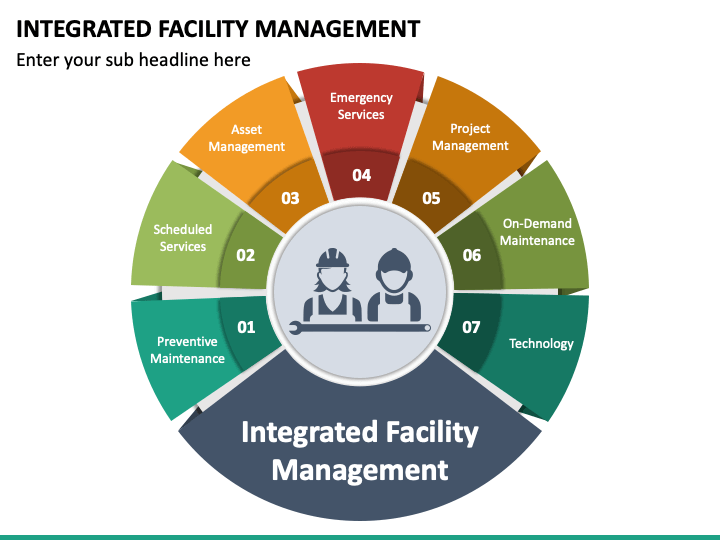Exploring the Advantages of Facility Management in Today's Corporate Landscape
Exploring the Advantages of Facility Management in Today's Corporate Landscape
Blog Article
The Important Guide to Center Administration: Strategies for Success
Facility monitoring plays an important role in the total success of an organization, working as the backbone that sustains performance, productivity, and security. By using strategic techniques such as integrated technical remedies and fostering cross-departmental partnership, companies can significantly improve their functional structures. The subtleties of reliable center management extend beyond mere logistics and need a detailed understanding of both qualitative and measurable metrics. As we discover these essential strategies, a closer evaluation reveals exactly how they can transform not just facilities, but the very culture within an organization itself. What might these changes look like in practice?
Comprehending Facility Monitoring
What makes up effective center administration? Effective center administration encompasses the control of different organizational features to ensure that constructed atmospheres are safe, effective, and for performance. Facility Management. It integrates the concepts of engineering, service, and architecture administration to create a seamless functional flow within an organization
Crucial element of center management include room planning, upkeep monitoring, and compliance with health and wellness and safety guidelines. Room planning focuses on maximizing the use of physical resources to sustain organizational goals, while maintenance monitoring ensures that centers are maintained in optimal condition, maximizing life expectancy and lowering functional costs. Compliance with regulatory and legal requirements is crucial, as it safeguards the company versus possible responsibilities and enhances its credibility.
Moreover, reliable center monitoring relies upon the tactical use innovation, such as Structure Administration Solution (BMS) and Computer-Aided Center Monitoring (CAFM) devices. These modern technologies promote real-time surveillance of structure systems and simplify upkeep procedures. Inevitably, a thorough strategy to center monitoring not just advertises functional effectiveness however likewise fosters a positive environment for employees and site visitors alike, driving general organizational success.
Key Strategies for Optimization
Optimizing center monitoring needs a calculated method that aligns operational techniques with business goals. To achieve this, the initial essential technique is the implementation of incorporated technical services. Making use of sophisticated software systems allows for real-time surveillance of center operations, facilitating data-driven decision-making and boosting general efficiency.
Second of all, routine analyses of center performance are essential. Performing routine inspections and audits makes it possible for facility supervisors to determine locations that need improvement, making sure that resources are alloted successfully. This proactive technique helps in decreasing downtime and improving solution shipment.
An additional vital strategy is promoting cooperation across divisions. By encouraging open interaction between teams, center managers can much better straighten their techniques with organization goals, leading to enhanced functional synergy. Furthermore, involving staff in training programs promotes a society of accountability and improves their capacity to add to optimization efforts.
Enhancing Security Methods
Strengthening security methods is essential for producing a safe and secure environment within facilities. A detailed safety and security protocol not only safeguards site visitors and employees however likewise boosts functional performance. To achieve this, facility managers should perform regular risk analyses to identify prospective dangers and make certain that suitable steps remain in location.
Educating and education are vital components of effective safety protocols - Facility Management. Employees ought to receive ongoing training in emergency procedures, tools handling, and individual safety actions. Normal drills, such as fire emptyings or lockdown procedures, foster experience and preparedness amongst team
In addition, clear interaction channels should be established to report safety and security problems without delay. This consists of producing an available platform for employees to articulate prospective risks or events without fear of retribution. Leveraging modern technology can improve safety actions; for example, implementing security systems and gain access to controls aids monitor center activities and limit unauthorized access.
Finally, conformity with regional regulations and market standards is non-negotiable. Routine audits and reviews of security procedures make sure placement with current regulations and best techniques. By prioritizing these methods, facility managers can grow a culture of security that protects all stakeholders and eventually adds to the organization's success.
Improving Workplace Atmosphere

Ergonomic factors to consider are vital to decrease physical pressure and discomfort. Facility Management. This involves providing flexible furniture, proper lights, and ample area for movement. These adjustments can bring about minimized absenteeism and raised task fulfillment
Aesthetic appeals play a vital duty in forming the workplace ambience. Using color psychology, all-natural lighting, and plant can promote a stimulating and inviting environment. Attentively developed rooms can improve creativity and enhance overall health.
Furthermore, urging worker involvement with comprehensive decision-making processes can boost the sense of ownership and belonging. Collecting feedback on work environment enhancements and involving employees in the layout procedure can result in a more tailored environment that fulfills their requirements.
Lastly, promoting well-being efforts, such as health cares and relaxation rooms, can additionally contribute to a supportive office society. By concentrating on these approaches, center managers can properly enhance the office atmosphere, driving both staff additional info member satisfaction and organizational success.
Determining Success in Facilities
Measuring success in center monitoring needs an extensive strategy that reviews both quantitative and qualitative metrics. Measurable metrics usually include crucial performance indicators (KPIs) such as area use prices, energy consumption, upkeep costs, and tenancy levels. These metrics provide a clear photo of functional performance and monetary performance, permitting center managers to identify areas for renovation and benchmark versus industry standards.
Qualitative metrics, on the other hand, concentrate on individual contentment and worker engagement. Studies and responses mechanisms can assess just how well the facilities satisfy this the demands of owners, helping to analyze the general workplace setting. This facet is crucial, as a completely satisfied workforce is frequently connected to increased efficiency and retention rates.
To effectively gauge success, center managers must also take into consideration incorporating innovation, such as constructing monitoring systems and information analytics devices, to collect and analyze relevant information. On a regular basis assessing both collections of metrics allows for a much more well balanced view of performance and informs calculated decisions. Eventually, a successful center administration approach depends upon a dedication to continuous renovation, making certain that both functional efficiencies and user fulfillment are prioritized.
Verdict

Center monitoring plays an essential role in the overall success of an organization, serving as the foundation that sustains productivity, effectiveness, and safety and security.Secret components of facility monitoring include area planning, maintenance management, and compliance with health and wellness and safety and security laws.In addition, efficient center monitoring counts on the calculated usage of innovation, such as Building Administration Solution (BMS) and Computer-Aided Facility Monitoring (CAFM) tools. Ultimately, a detailed method to facility monitoring not only promotes operational performance yet additionally cultivates a favorable environment for employees and visitors alike, driving total organizational success.
Eventually, a successful center management method pivots on a commitment to continuous renovation, making sure that both operational more information effectiveness and customer satisfaction are prioritized.
Report this page